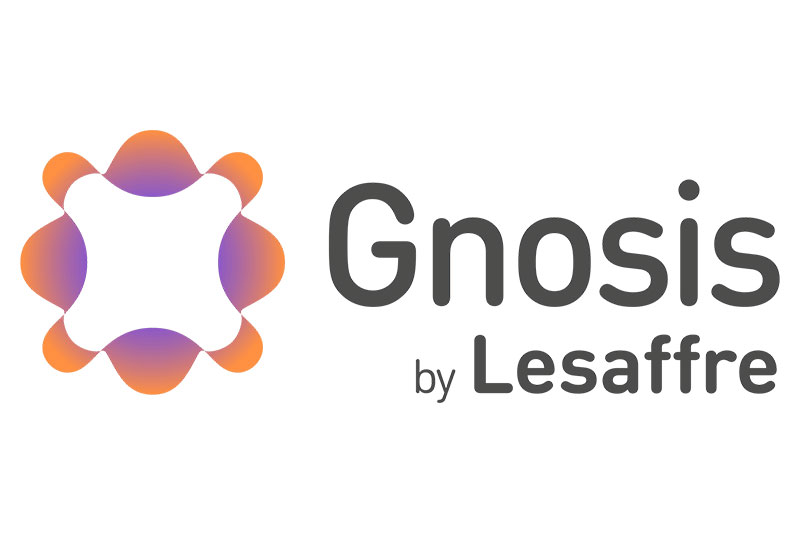In response to growing concerns over the impact of folate deficiency and the repercussions of excessive folic acid consumption due to food fortification, Gnosis by Lesaffre researchers have been exploring innovative ingredients that are more soluble and bioavailable, suitable for all people without adverse health effects.
Quatrefolic® is the unique glucosamine salt on the market. It is the bioactive form of folate (5-MTHF), bypassing the need for enzymatic conversion and making it directly usable by the body. This makes it a more efficient choice for individuals with difficulty metabolising folic acid. Supplementing with 5-MTHF provides an immediate source of active folate, ensuring that the body receives the full benefits of the nutrient.
A complex (but important) conversion
The rationale behind reducing folate, especially methylated forms like Quatrefolic®, stems from the difficulty that a portion of the global population faces in absorbing and metabolising folic acid from food or supplements.⁴⁻⁶ Both folic acid and naturally occurring food folate are biologically inactive and must convert into the active form, 5-MTHF, through a multi-step process. A key enzyme involved in this conversion is methylenetetrahydrofolate reductase (MTHFR). However, due to their unique genetic makeup and enzyme expression, specific individuals possess polymorphic variants of MTHFR, which result in a reduced ability to produce sufficient amounts of this enzyme.
For pregnant women, 5-MTHF supplementation is particularly essential, as it plays a significant role in the healthy development of the fetus and in reducing the risk of congenital disabilities, such as neural tube defects. Folate is a critical nutrient during pregnancy because it is involved in processes like DNA synthesis and cell division—both of which are accelerated due to the rapid growth and development of the fetus. These processes are fundamental to forming the baby's organs, nervous system and tissues. Adequate folate levels help ensure these processes occur efficiently, minimising the risk of developmental problems.
Therefore, supplementing Quatrefolic®, the active form of folate, ensures that the body can use the nutrient effectively without complex metabolic conversion. This is especially important for individuals with impaired folate metabolism.
Folate supports cardiovascular health
In addition to its importance for fetal development, 5-MTHF also plays a crucial role in regulating homocysteine levels. Homocysteine is an amino acid that, at elevated levels, can pose significant risks to cardiovascular and neurological health. High homocysteine levels have been associated with an increased risk of heart disease, stroke and cognitive decline. 5-MTHF helps convert homocysteine into beneficial compounds, thus maintaining healthy levels of this amino acid. This mechanism can reduce the risk of cardiovascular issues, promote optimal brain health and support overall well-being.
In fact, Quatrefolic® active folate has been studied for its effects in homocysteine control. In one study, 400 μg of Quatrefolic® plus vitamins B6 was compared to a conventional vitamin supplementation with highly dosed folic acid (5 mg/day) in hypertensive participants at low cardiovascular risk. The result showed a significant HCys reduction compared with the baseline in the Quatrefolic® group. Further, the researchers found that nearly 56% of the Quatrefolic® group achieved ideal homocysteine levels.⁷
Thus, 5-MTHF supplementation can benefit individuals at various stages of life, ensuring optimal health, eliminating deficiencies and promoting overall well-being.
References:
⁴ Patanwala I et al. Folic acid handling by the human gut: implications for food fortification and supplementation. Am J Clin Nutr. 2014
⁵ Scaglione F, Panzavolta G. Folate, folic acid and 5-methyltetrahydrofolate are not the same thing. Xenobiotica. 2014
⁶ Ulrich CM, Potter JD. Folate supplementation: too much of a good thing? Cancer Epidemiol Biomarkers Prev. 2006
⁷ Mazza A, et al. Nutraceutical approaches to homocysteine lowering in hypertensive subjects at low cardiovascular risk: a multicenter, randomized clinical trial. J Biol Regul Homeost Agents 2016; 30:921–7.

